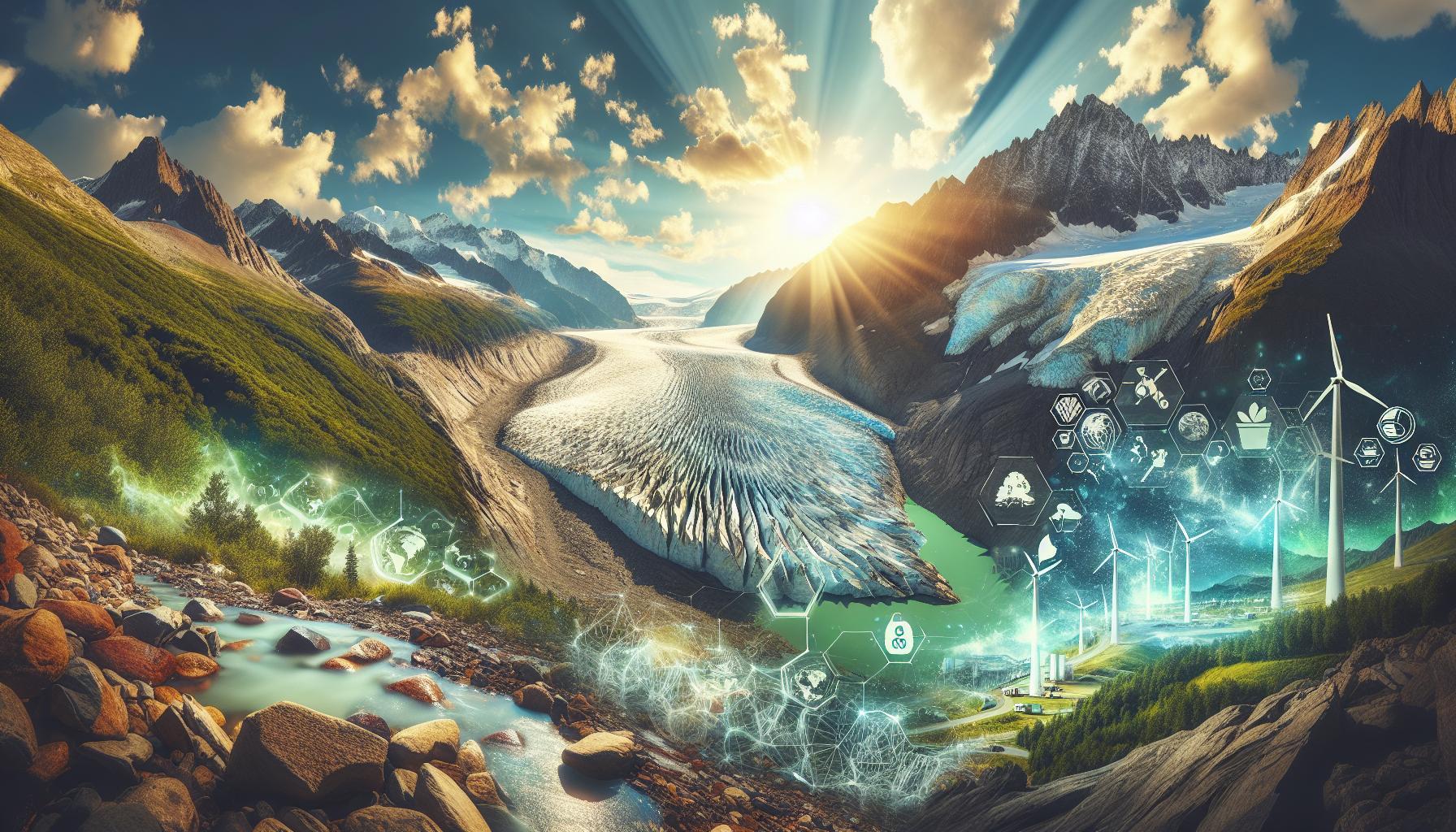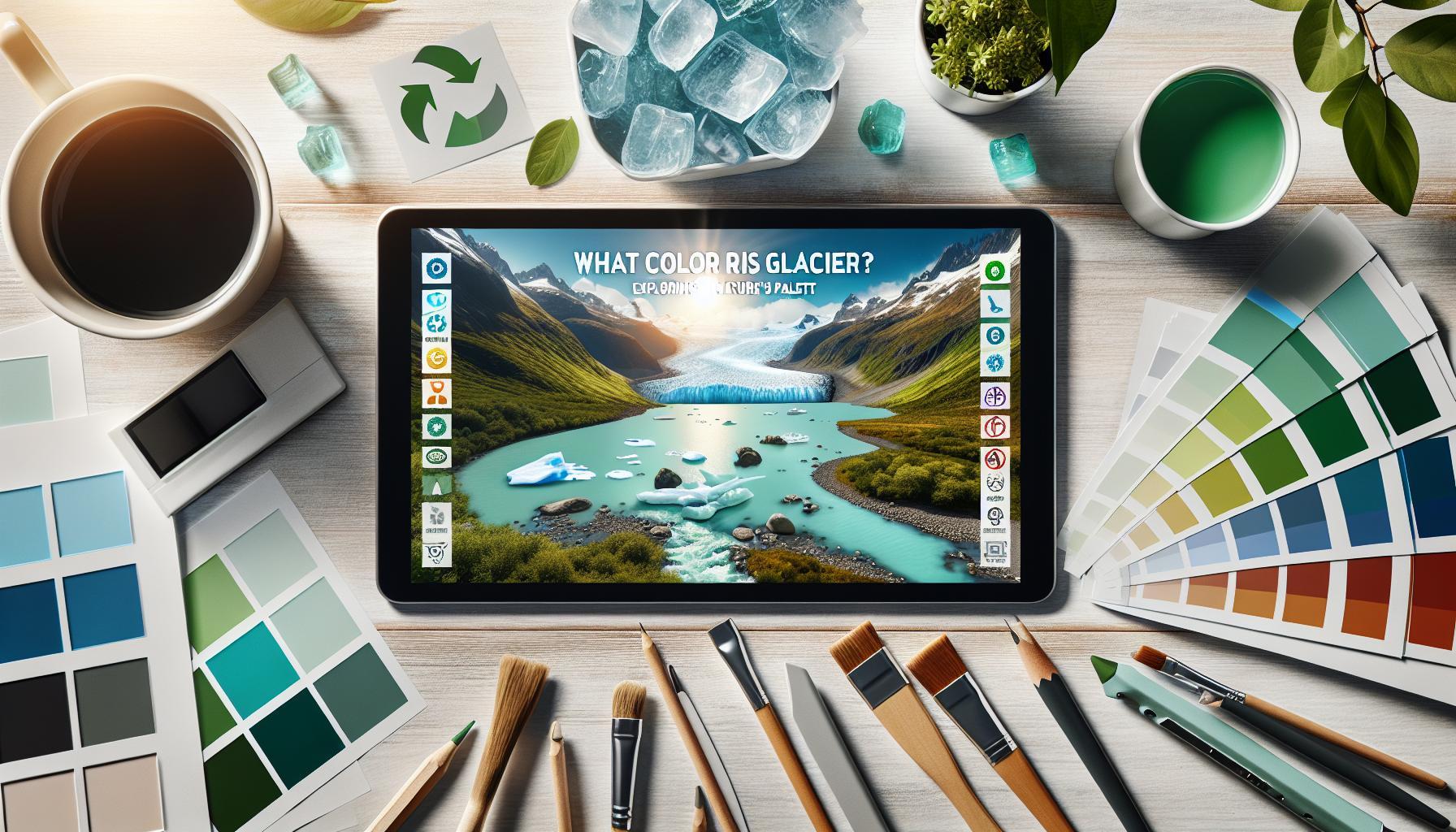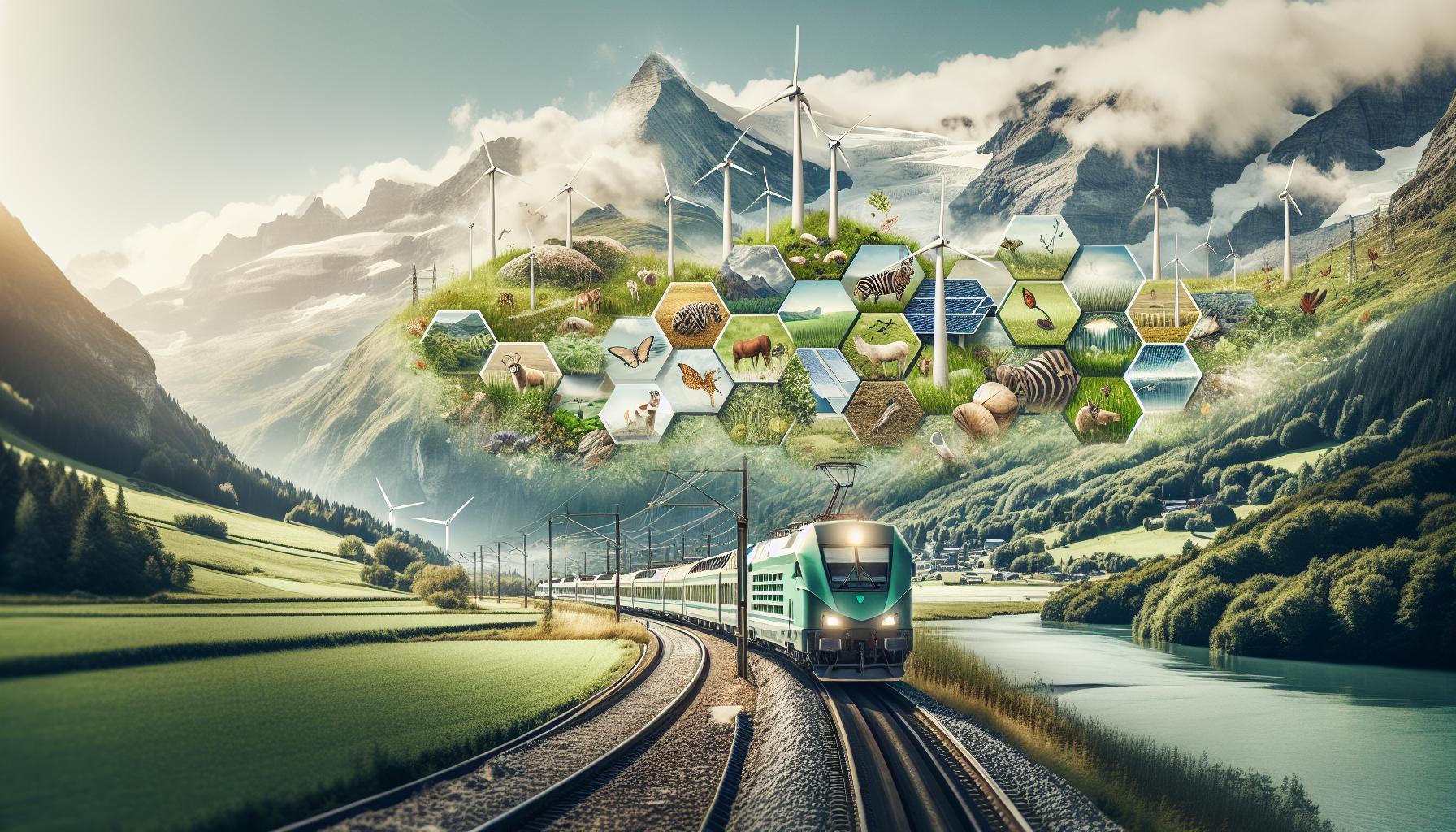Did you know that glaciers, often seen as symbols of pristine wilderness, are critical indicators of climate health? In Colorado, the stunning Rocky Mountains host several glaciers that not only shape the landscape but also play a vital role in the ecosystem. As temperatures rise, these icy giants reveal profound insights into our changing climate and the urgent need for conservation efforts.
Exploring Colorado’s glaciers offers a unique opportunity to connect with nature and understand the intricate balance between environmental health and human activity. For hikers, photographers, and nature enthusiasts, these glaciers serve as both a destination and a subject of awe, reminding us of the planet’s fragile beauty.
Join us as we delve into the fascinating world of Rocky Mountain glaciers, uncovering their history, significance, and the challenges they face. Through this journey, you’ll discover how each visit contributes to a greater awareness of the natural world and highlights our shared responsibility to protect it for future generations.
Is There a Glacier in Colorado?
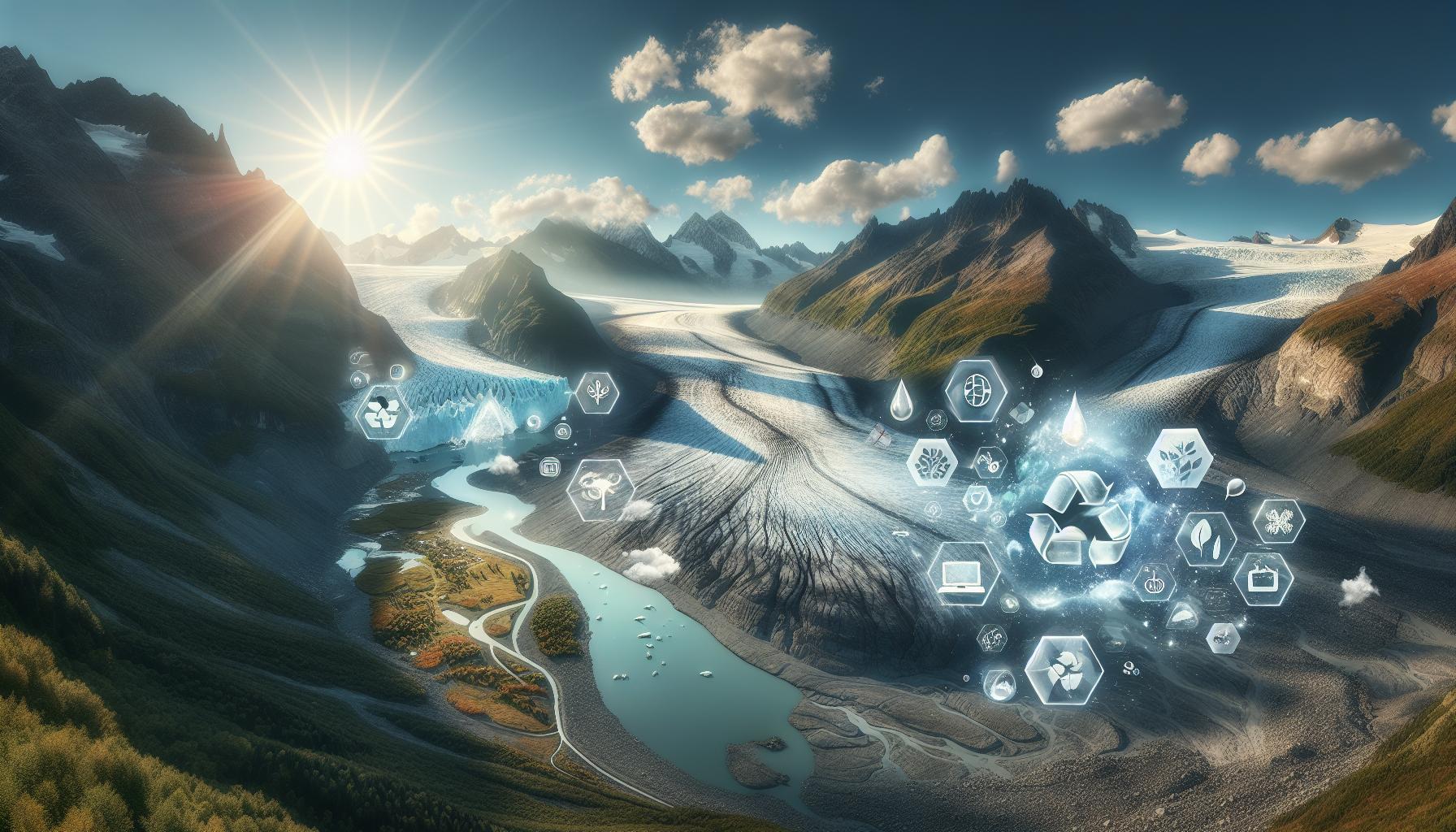
Colorado is home to several glaciers, particularly in the Rocky Mountain region, where the unique geological and climatic conditions have allowed these ice formations to thrive. Among the most notable glaciers are those found in Rocky Mountain National Park, including the well-known Tyndall Glacier and the smaller but equally fascinating Andrews Glacier. These glaciers are remnants of the Ice Age and serve as significant indicators of past climate conditions.
Glaciers form through the accumulation of snow over many years, which compresses into ice. This process creates a dynamic natural system where ice flows downhill under the influence of gravity. In Colorado, glaciers typically reside above 11,000 feet in elevation, where cold temperatures promote the longevity of icy formations. Visitors can explore trails that lead to these glaciers, offering stunning views and a tangible connection to the Earth’s climatic history.
Despite their majestic beauty, glaciers in Colorado are threatened by climate change, which has led to increased temperatures and reduced snowfall. This warming trend poses a serious risk of glacial retreat, altering ecosystems and affecting water supplies for adjacent communities. Conservation efforts and sustainable practices are crucial to preserve these remarkable natural features, fostering a sense of stewardship among residents and visitors alike.
To fully appreciate Colorado’s glacial landscape, outdoor enthusiasts can engage in various activities such as hiking, photography, and guided educational tours. These experiences not only provide a chance to witness the beauty of glaciers but also to understand their ecological significance and the need for their protection in an era of rapid climate change.
What Defines a Glacier? Understanding the Basics
Among the most awe-inspiring natural features on our planet, glaciers serve as powerful symbols of the Earth’s climatic history. A glacier is defined as a massive body of ice that forms over many generations through the accumulation, compaction, and recrystallization of snow. These ice giants not only encapsulate vast amounts of Earth’s freshwater but also shape the landscapes around them as they flow under the influence of gravity. In places like Colorado, where the Rocky Mountains rise dramatically, glaciers can be found at high altitudes where perpetual cold keeps them intact.
The formation of a glacier begins with snow accumulating in regions where winter snowfall exceeds summer melting. Over time, the weight of new snow compresses the layers beneath, transforming them into dense ice. This ice gradually begins to move, albeit slowly, creating a dynamic system that carves valleys and shapes mountains. Understanding this process highlights the essential role glaciers play in sculpting our environment, as well as in providing critical water resources for ecosystems and human communities downstream.
In the context of Colorado, glaciers are often found at elevations above 11,000 feet, where temperatures remain cool enough to preserve the ice year-round. Glaciers such as Tyndall and Andrews are not merely relics of a bygone era; they are active components of the ecosystem, influencing local hydrology and serving as crucial indicators of climate change. Observing these glaciers offers a unique glimpse into the past, capturing a snapshot of the Earth’s climatic shifts over thousands of years.
Protecting these splendid formations is important not just for their inherent beauty but also for their ecological significance. Efforts to mitigate the impacts of climate change on Colorado’s glaciers involve not only scientific research and monitoring but also community engagement in sustainable practices. By fostering awareness and encouraging eco-friendly behaviors, individuals can contribute to preserving these natural wonders for future generations. As stewards of the land, it’s vital for us to understand what defines a glacier and the roles they play in our environment, motivating ongoing conservation efforts.
Exploring Glacial Features in the Rocky Mountains
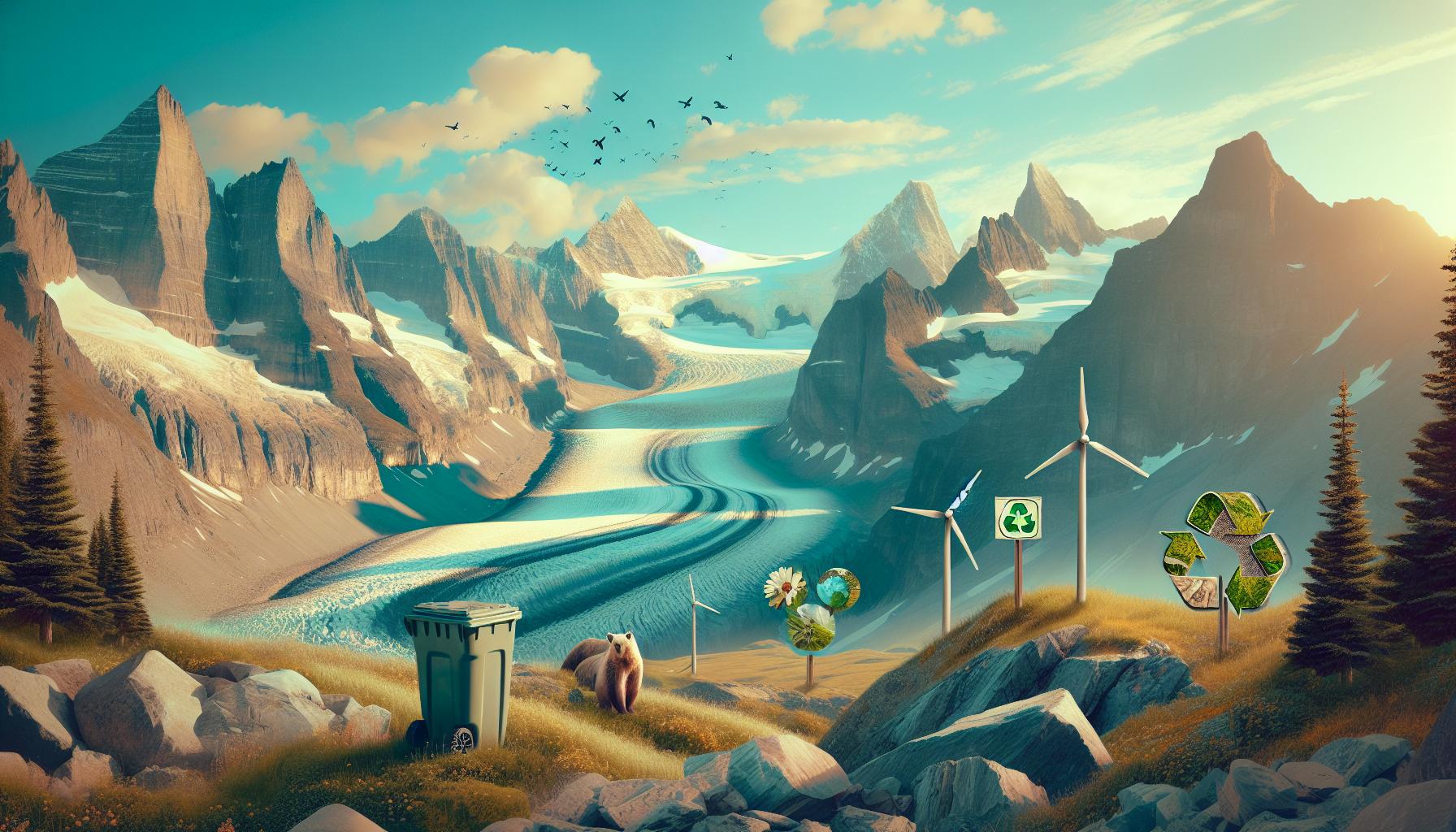
The Rocky Mountains are a treasure trove of glacial features that offer visitors a unique insight into the powerful forces of nature. Among these, the persistent glaciers serve as stunning indicators of climatic history and ongoing environmental changes. Some of the notable glacial formations include hanging glaciers, cirques, and moraines, all of which contribute to the breathtaking landscapes that characterize this region. By observing these features, enthusiasts can appreciate not only their beauty but also their historical significance in shaping the rugged terrain of Colorado.
One can find spectacular features like the cirques-bowl-shaped depressions carved by glacial activity-nestled among the mountain peaks of the Rockies. These formations are often accompanied by steep cliffs and glacial lakes, which are remnants of melting ice. For example, the serene Blue Lakes, located near the Rockies, is surrounded by dramatic scenery that showcases glacial erosion. Additionally, moraines, which are accumulations of debris left behind as glaciers retreat, provide hikers with tangible evidence of past glacial movements and the changing climate.
Exploring these glacial features not only satisfies the curiosity of outdoor enthusiasts but also fosters a deeper understanding of the environment. Guided hikes and ranger-led programs in national parks, such as Rocky Mountain National Park, often include educational components that allow visitors to learn about the geology and ecology tied to these glaciers. Engaging with local conservation efforts also enhances the experience, as individuals can contribute to protecting the very landscapes that attract them.
As climate change poses increasing threats to these icy wonders, awareness and activism become critical. Visitors to Colorado’s glaciers are encouraged to practice Leave No Trace principles and engage in local conservation initiatives. Every small action contributes to the greater good of preserving these natural marvels for future generations, ensuring that we can continue to explore and cherish the remarkable glacial features of the Rocky Mountains.
Historic Glaciers: Ice Age Influence on Colorado
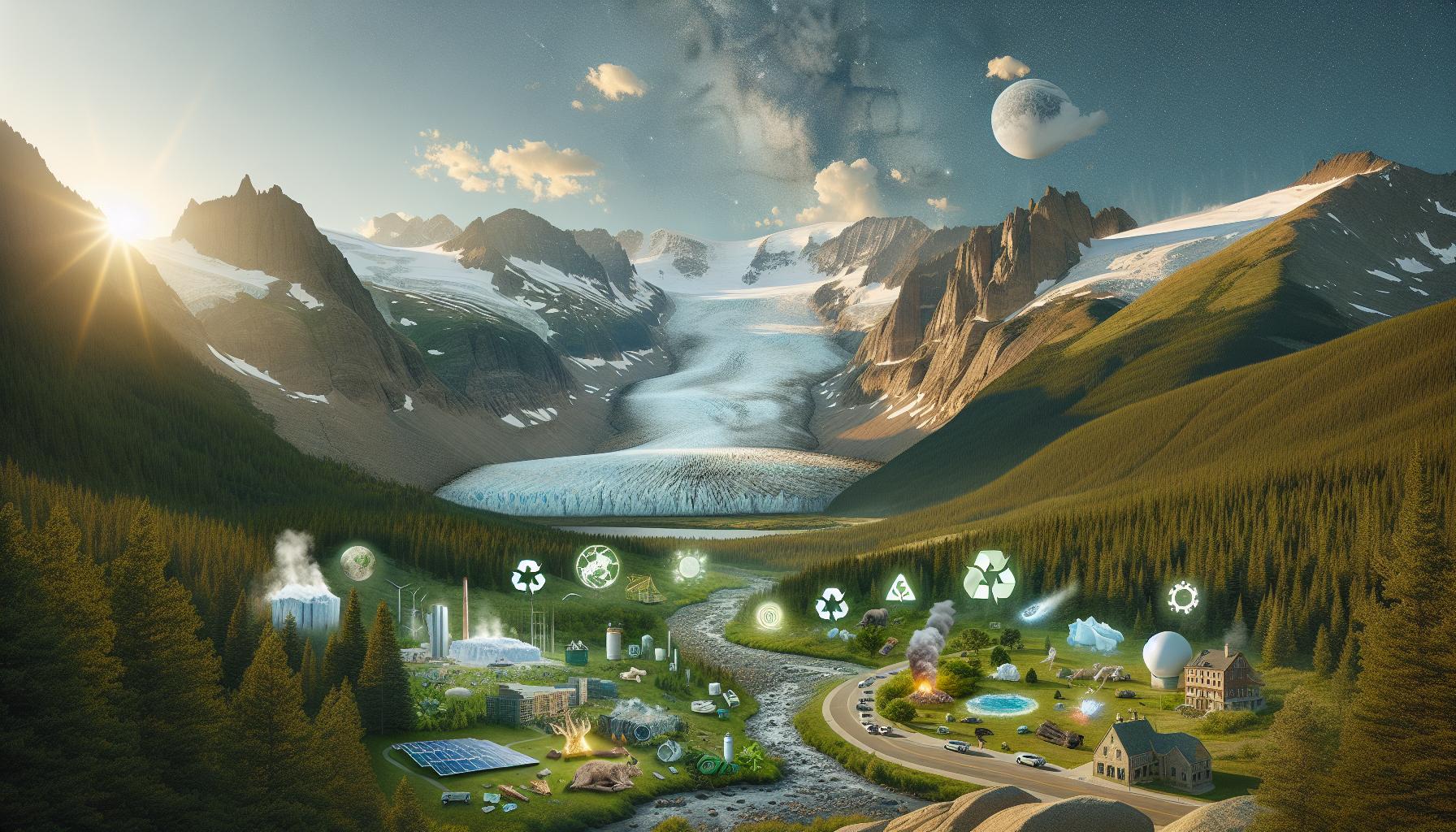
During the last Ice Age, which peaked approximately 20,000 years ago, giant glaciers blanketed much of North America, including Colorado. These colossal ice masses sculpted the state’s landscape, leaving a rich legacy of unique geographical features and ecosystems that continue to fascinate scientists and outdoor enthusiasts alike. As these glaciers advanced and retreated, they carved out mountain valleys, created deep lakes, and deposited a wide range of sediment-a process that has profoundly influenced local biodiversity and soil composition.
Today, the natural evidence of these historic glaciers can be seen across the Rocky Mountains. Iconic locations such as Glacier Basin and the cirques of the Front Range present visitors with a striking visual history of glacial activity. The terraces and moraines around these areas serve as indicators of the immense power these ancient ice sheets wielded over the landscape. As the ice receded, they left behind distinct ridges of rock and debris, shaping the terrain we see today, which supports diverse wildlife and varied plant communities.
Understanding this historical context not only enriches our appreciation of Colorado’s natural beauty; it also reminds us of the dynamic ways the Earth has changed over millennia. Glacial features like U-shaped valleys and hanging valleys tell stories of erosional power and climatic shifts, emphasizing humanity’s connection to Earth’s geological history. Moreover, as climate change increasingly threatens these landscapes, it becomes vital for us to appreciate and protect these signs of our planet’s past while advocating for responsible environmental stewardship.
Engaging with Colorado’s icy relics provides a powerful opportunity to learn about Earth’s history and the implications of present-day climate shifts. Visitors can actively participate in conservation efforts, ensuring these natural wonders can be experienced by future generations, preserving the delicate balance of life that exists in these stunning glacial environments.
Current Glacier Locations: Where to Find Rocky Mountain Ice
The stunning beauty of Rocky Mountain glaciers captivates outdoor enthusiasts and nature lovers alike. Colorado is home to several captivating glaciers, predominantly located within the Rocky Mountain National Park. Among the most notable are the Tyndall Glacier and the Arrowhead Glacier, both accessible through well-marked trails that offer breathtaking views and a glimpse into the powerful forces of nature.
One of the best places to see glaciers in Colorado is the Longs Peak area. Here, hikers can explore the rugged terrain leading up to the Tyndall Glacier, nestled in the shadow of Longs Peak itself. This glacier is particularly fascinating as it showcases the unique formations and textures of glacial ice, making it a popular destination for both experienced hikers and those looking to learn more about the incredible glacial processes at work.
Key Glacier Locations in Rocky Mountain National Park
- Tyndall Glacier: Located in the north of Longs Peak, this glacier is one of the largest in the park and serves as an insightful example of glacial dynamics.
- Lake Louise Glacier: A smaller glacier situated near Lake Louise, known for its stunning turquoise waters and vibrant wildflower meadows during summer.
- Arrowhead Glacier: Offering a more secluded experience, Arrowhead Glacier can be reached through less-traveled trails, providing solitude and spectacular views.
For those seeking guided experiences, various local organizations offer educational hikes that explore these glacial wonders while incorporating lessons on the ecology and geology of the area. Participating in these hikes not only enriches one’s understanding but also fosters a deeper appreciation for the preservation of these delicate environments amidst changing climate conditions.
As climate change poses a significant threat to glacial environments, witnessing these majestic ice masses raises awareness of their vulnerability and the critical need for conservation. By visiting these glaciers, individuals can contribute to a broader narrative of environmental stewardship, emphasizing the importance of preserving Colorado’s natural heritage for future generations to enjoy.
The Impact of Climate Change on Colorado Glaciers
The startling reality is that Colorado’s glaciers, like many around the globe, are facing unprecedented changes due to climate change. These majestic ice formations, which have been integral to the landscape and ecology of the Rocky Mountains for millennia, are retreating at alarming rates. Studies indicate that the volume of glacial ice in Rocky Mountain National Park has diminished significantly, with some glaciers, such as the Tyndall and Arrowhead, showing visible reductions in their size and mass over the last few decades. The implications of these transformations extend beyond aesthetic concerns, profoundly impacting local ecosystems and water resources.
As temperatures rise, both summer and winter precipitation patterns have altered, affecting the glacial meltwater that is crucial for streams and rivers supporting wildlife and human needs. The gradual disappearance of glaciers not only threatens the unique habitats that depend on their presence but also contributes to changes in the hydrological cycle, which can lead to more severe droughts and floods in the region. In particular, the seasonal flow of meltwater that supports agriculture and drinking water supplies is becoming increasingly unpredictable, raising concerns among local communities that rely on these vital resources.
Community awareness and action have become paramount in combating these climate-induced challenges. Engaging with local conservation organizations can foster a deeper understanding of the issues facing Colorado’s glaciers and promote sustainable practices. For instance, guided educational hikes to glacial areas can help visitors appreciate and learn about the delicate balance of these ecosystems while highlighting the importance of their preservation. Simple actions, such as reducing carbon footprints, supporting renewable energy initiatives, and advocating for local environmental policies, can collectively contribute to slowing the effects of climate change on these precious ice formations.
Ultimately, while the challenges posed by climate change are significant, they are not insurmountable. By fostering a culture of stewardship and awareness, individuals and communities can play a critical role in preserving the glacial wonders of Colorado for future generations. The beauty and resilience of these glaciers serve not only as a reminder of nature’s power but also as a call to action to protect our planet’s delicate ecosystems.
Glacial Dynamics: How Glaciers Move and Shape Landscapes
Glaciers, the Earth’s slow-moving rivers of ice, are remarkable dynamic systems that continuously shape the landscapes they inhabit. In Colorado, the movement of glaciers is driven primarily by gravity, which compels the ice to flow from areas of accumulation, where snow builds up, to regions where it melts. This process is known as glacial flow, and it can occur in various ways, including basal sliding, internal deformation, and the influence of external forces such as temperature and topography. As glaciers advance and retreat, they sculpt valleys, form recessional moraines, and create stunning U-shaped glacial valleys that contrast with the sharper peaks of the Rocky Mountains.
Glacial Movement and Landform Creation
The powerful force of glaciers can be responsible for a variety of geological features. The sheer weight of thick ice compresses the underlying rock, leading to both erosion and deposition processes that shape the surrounding terrain. As glaciers slide over the land, they carve grooves known as striations into bedrock, providing insight into the direction of glacial movement. Additionally, the glacial deposits, known as till, can create distinctive landforms such as drumlins and eskers, which are essential components of Colorado’s diverse topography.
One of the most fascinating aspects of glacial dynamics is their ability to impact ecosystems. The meltwater produced by glaciers is crucial for maintaining river flows, sustaining wildlife habitats, and supporting agricultural activities. As glaciers recede, they expose previously covered land and sediment that can create new habitats, leading to increased biodiversity in freshly exposed areas. This ongoing interaction between glaciers and the landscape illustrates how glaciers do not merely exist as cold masses of ice; they are active participants in shaping ecological networks and landforms.
Future Implications of Glacier Dynamics
However, the dynamics of glaciers in Colorado are increasingly affected by climate change, leading to rapid changes in glacial behavior and landscape transformation. As temperatures rise, glaciers are retreating more quickly than they can reform, influencing local water supplies and ecosystems. Continued observation and research into glacial movement are essential to understand broader climatic impacts and to develop sustainable practices that protect these critical natural resources.
Engaging in sustainable practices and supporting conservation efforts can make a significant difference in preserving Colorado’s glacial landscapes for future generations. By appreciating and understanding the intricate dynamics of these icy giants, we can inspire collective action to ensure their protection and the continued health of the regions they influence.
Sustainable Practices for Glacier Preservation in Colorado
As the iconic Rockies continue to melt, the preservation of glaciers in Colorado becomes not only a geological concern but a pivotal ecological challenge. The state’s glaciers contribute crucial meltwater that sustains freshwater ecosystems, agriculture, and urban water supplies. To combat the pressing threats posed by climate change, various sustainable practices can be adopted, enabling communities and individuals to play an active role in glacier conservation.
Engaging in responsible tourism is one of the most effective ways to protect glacial environments. When visiting glacial regions, hikers and outdoor enthusiasts should adhere to the Leave No Trace principles, which emphasize the importance of minimizing human impact on fragile ecosystems. This includes staying on designated trails, avoiding littering, and respecting wildlife habitats. By promoting awareness around sustainable tourism, visitors can help ensure that the natural beauty of Colorado’s glaciers remains intact for future generations.
In addition to personal responsibility, advocating for policy changes and supporting local conservation organizations can significantly impact glacier preservation efforts. Communities should engage in dialogues about land use, water management, and climate resolutions, pushing for policies that prioritize the health of glacial ecosystems. Furthermore, participating in volunteer initiatives such as habitat restoration projects or citizen science programs fosters a deeper connection to these natural wonders while contributing to their protection.
Another critical aspect is educating others about the importance of glaciers and the challenges they face. Schools and community programs can incorporate local environmental education, teaching younger generations about the role glaciers play in climate balance and biodiversity. Facilitating discussions on the science of glaciers, their ecology, and the ongoing impact of climate change helps cultivate a proactive mindset within communities, empowering individuals to make informed choices in their daily lives that align with conservation goals.
Ultimately, the fate of Colorado’s glaciers rests not only on natural processes but also on our collective efforts to preserve the delicate ecosystems they support. By implementing sustainable practices, advocating for policy change, and promoting education, we can protect these majestic ice formations and ensure that they continue to shape the landscape of Colorado for years to come.
Outdoor Adventures: Hiking Near Colorado’s Glaciers
Nestled within the Rocky Mountains, Colorado’s glaciers offer spectacular scenery and outdoor adventures that beckon hikers and nature lovers alike. The combination of towering peaks, shimmering ice, and pristine alpine environments creates a unique opportunity for exploration. One of the most accessible and captivating areas to hike near glaciers is Rocky Mountain National Park, where visitors can witness the dynamic interplay of ice, water, and rock that characterizes glacial landscapes.
Popular Hiking Trails
Several trails within the park provide access to glacial features and breathtaking vistas. Notable options include:
- Bear Lake Trail: A short, scenic loop that leads to Bear Lake and offers views of the surrounding glacial valleys.
- Sky Pond Trail: This moderately strenuous hike takes you through Glacier Gorge, revealing stunning waterfalls and a beautiful glacial lake, Sky Pond.
- Longs Peak Trail: For the more adventurous, this challenging route leads to the summit of Longs Peak, the northernmost fourteener in the Rockies, often involving sections of snow and ice even in summer.
These trails not only provide close encounters with glacial features but also impart geological knowledge about how glaciers sculpt the landscape.
Preparation and Safety
When hiking near glaciers, safety and preparation are paramount. Glacial areas can present unique challenges such as unpredictable weather, icy trails, and rapidly changing conditions. Here are some key tips for a safe and enjoyable hiking experience:
- Check Weather Conditions: Always check mountain weather forecasts before heading out to prepare for sudden changes.
- Wear Appropriate Gear: Sturdy hiking boots with good traction, layers for fluctuating temperatures, and trekking poles can enhance safety and comfort.
- Stay Informed: Familiarize yourself with trail conditions, and always notify someone of your hiking plans.
By embracing these precautions, hikers can immerse themselves in the beauty of Colorado’s glacial landscapes while enjoying the thrill of the great outdoors.
The pristine ice formations and glacial remnants are not just visually stunning; they also play a crucial role in ecology. Engaging with these majestic natural features fosters a deep appreciation for their significance and the urgent need for their conservation. Each hike represents an opportunity to connect with nature, enjoy the breathtaking views, and reflect on the critical environmental challenges faced by glaciers in the face of climate change. Through responsible outdoor adventures, visitors can contribute to the preservation of these incredible landscapes for future generations to enjoy.
Scientific Research: Studying Ice Masses in Colorado
In the heart of Colorado, the study of glaciers offers a window into past climates and provides critical insights into current environmental changes. Research on these ice masses is essential, as glaciers are living records of our planet’s history and play a significant role in the Earth’s hydrology and ecosystem dynamics. Among notable research endeavors in Colorado, the Rocky Mountain National Park serves as a focal point, where scientists investigate the behavior, composition, and changes of glacial ice, all of which are vital for understanding climate impacts.
Scientists employ a variety of techniques to analyze glaciers, including remote sensing, ice core drilling, and field measurements. Each method offers unique data: for instance, ice core samples can reveal atmospheric conditions from thousands of years ago, allowing researchers to interpret trends in temperature, precipitation, and greenhouse gas concentrations over millennia. In addition, satellite imagery provides large-scale changes regarding glacier retreat, thickness, and surface melt, which are telling indicators of climate change.
As the impacts of climate change become more pronounced, glacial research not only aims to understand the past but also informs future projections. The diminishing ice cover affects local water resources which depend on glacier melt for streams and rivers-water that supports both human communities and natural ecosystems. Thus, ongoing studies are crucial for developing adaptive management strategies for water use in the face of reduced glacial mass.
The collaborative efforts of universities, conservation organizations, and government agencies enhance the scope and impact of glacier research in Colorado. Their findings not only contribute to scientific knowledge but also aid in raising public awareness about the importance of glacial preservation. Engaging local communities through outreach programs can spark interest in glacier conservation, highlighting that individuals can make a difference in combating climate change through informed action and community initiatives. By understanding the role of glaciers, visitors and residents alike can appreciate their beauty and advocate for their protection, helping to ensure these icy marvels endure for generations to come.
The Future of Glaciers in the American West
As we look ahead, , particularly in Colorado, presents a fascinating interplay between environmental science and the pressing challenges of climate change. Glaciers, often regarded as indicators of our planet’s health, are experiencing significant transformations due to rising temperatures and shifting precipitation patterns. These changes urge both scientists and the public to rethink how we engage with and protect these vital ice masses.
The Rocky Mountain National Park serves as a critical site for understanding the trajectory of these glaciers. Researchers are documenting accelerated melting, with projections suggesting that many smaller glaciers could vanish within the next few decades. The importance of these ice formations extends beyond their majestic beauty; they act as essential water reservoirs, feeding local rivers and ecosystems during warmer months. This seasonal meltwater is crucial for sustaining both urban and agricultural needs in the region.
To foster glacier preservation, it is essential to promote awareness and proactive measures within local communities. Educational programs can help residents understand their role in mitigating climate change impacts, whether through conservation, reducing carbon footprints, or supporting sustainable policies. Simple actions, like participating in local tree planting initiatives or advocating for renewable energy sources, can cumulatively have a meaningful impact.
Additionally, collaboration between government agencies, academic institutions, and non-profit organizations can enhance research efforts and promote broadened conservation strategies. By utilizing advanced technology, such as satellite monitoring and local citizen science projects, communities can track changes in glacial mass and engage in real-time observations of their environment. This participatory approach not only enriches scientific understanding but also inspires individuals to connect with and conserve Colorado’s natural heritage, ensuring that these icy wonders endure for future generations.
How to Visit and Experience Colorado’s Glacial Wonders
Exploring the breathtaking glacial wonders of Colorado offers an unforgettable experience filled with stunning landscapes and unique natural phenomena. The state, particularly the Rocky Mountain National Park, is home to several glaciers that are remnants of the last Ice Age. Visitors can immerse themselves in this magnificent environment by following key recommendations for responsible exploration and enjoyment.
To maximize your visit, plan your trip during the warmer months, typically from late June through September, when trails are more accessible and weather conditions are favorable. Acquaint yourself with popular hiking routes that lead to glacial areas, such as the Bear Lake Trailhead, which serves as an excellent starting point for various hikes that showcase glacial features. As you trek, be sure to capture not only the awe-inspiring vistas but also the flora and fauna uniquely adapted to this high-altitude, cold environment.
Responsible Exploration
Your adventure among Colorado’s glaciers should prioritize conservation and safety. Stick to marked trails to minimize environmental impact and protect delicate ecosystems. As you hike, take note of any signage that discusses the glaciers’ significance and the ongoing research being conducted to monitor their health and changes. Engaging with these educational materials can deepen your appreciation for the delicate balance of life in these icy regions.
To enhance your experience, consider joining guided tours led by knowledgeable rangers or local experts. These guides not only provide insights into the glacial formations but also discuss the broader context of climate change and its impact on the region. Participating in guided experiences fosters a deeper connection with the landscape and encourages sustainable practices in the natural world.
Preserving the Beauty for Future Generations
When visiting glacial areas, remember that these environments are fragile and sensitive to human activities. To protect these natural treasures, follow the principles of leave no trace by packing out what you pack in, respecting wildlife, and refraining from disturbing the geological features. Simple actions, such as staying on established paths and avoiding littering, go a long way in preserving these magnificent places for future explorers.
Ultimately, experiencing Colorado’s glacial wonders is not just about witnessing majestic ice fields; it’s about becoming an advocate for their protection. Engaging with local conservation initiatives or volunteering in preservation efforts allows you to connect more deeply with the environment and contribute positively to the ongoing dialogue surrounding climate change and environmental stewardship. Through responsible exploration and active participation, you can help ensure that the splendor of Colorado’s glaciers endures for generations to come.
Q&A
Q: Is there a glacier in Colorado?
A: Yes, Colorado is home to several glaciers, primarily located in the Rocky Mountain National Park. Notable glaciers include the Andrews Glacier and the Tyndall Glacier. These ice formations are essential for studying climate change and ecosystem health.
Q: What is the largest glacier in Colorado?
A: The largest glacier in Colorado is the Arapaho Glacier, located in the Indian Peaks Wilderness. This glacier is a popular destination for hikers and nature lovers, providing stunning views and unique geological features.
Q: When is the best time to see glaciers in Colorado?
A: The best time to see glaciers in Colorado is during the summer months, typically from late June to early September. During this period, warmer temperatures lead to reduced snow cover, revealing more of the glaciers’ structures and surrounding scenery.
Q: How do glaciers affect the Colorado ecosystem?
A: Glaciers play a vital role in Colorado’s ecosystems by providing fresh water to streams and rivers as they melt. This water supports diverse wildlife habitats and is crucial for vegetation growth, particularly during drier months.
Q: What activities can you do at the glaciers in Colorado?
A: Visitors can enjoy various activities near Colorado’s glaciers, such as hiking, photography, and wildlife watching. Popular trails lead to glacier viewpoints, allowing visitors to appreciate the stunning landscapes while learning about glacial processes.
Q: Why are Colorado’s glaciers important for climate research?
A: Colorado’s glaciers serve as critical indicators of climate change. Researchers study their size, melt patterns, and ice composition to understand historical climate data and predict future environmental impacts.
Q: How can I protect Colorado’s glaciers?
A: To protect Colorado’s glaciers, practice Leave No Trace principles while hiking, support conservation efforts, and stay informed about climate issues. Engaging in local initiatives can also help preserve these vital natural resources for future generations.
Q: Are there guided tours available for visiting glaciers in Colorado?
A: Yes, several companies offer guided tours to Colorado’s glaciers, especially in the Rocky Mountain National Park area. These tours provide insights into glacial geology and ecology while ensuring safety in these rugged landscapes.
To Conclude
As we conclude our exploration of glaciers in Colorado, remember that these magnificent ice formations are not just natural wonders; they are vital indicators of our planet’s health. By understanding their role and the impacts of climate change, we equip ourselves to advocate for their preservation. If you found this journey insightful, consider delving deeper into our related articles on “Climate Change and Its Effects on Mountain Ecosystems” and “Sustainable Practices for Protecting Glacial Environments.”
Don’t miss your chance to stay informed and involved-sign up for our newsletter for the latest updates and insights on environmental issues. Join the conversation in the comments below: what steps do you think we can take to help protect our precious glaciers? Together, we can make a difference! For more resources on your path to sustainability, explore our toolkits and guides linked above. Your journey doesn’t end here; let’s keep seeking knowledge and solutions together.

